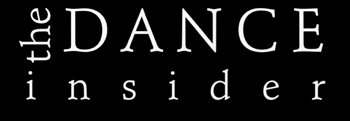|
|
the
New York manufacturer of fine dance apparel for women and girls. Click here to see a sample of our products and a
list of web sites for purchasing.
With Body Wrappers it's always performance at its best.
|
Go back to Flash Reviews
Go Home
Flash
Review, 12-19: New Revelations
Ailey Shows Muscle in Premieres
By Susan Yung
Copyright 2002 Susan Yung
NEW YORK -- On Tuesday
at City Center, Alvin Ailey American Dance Theater presented two
works premiering this season (from former company dancers Francesca
Harper and Lynne Taylor-Corbett), one work receiving its company
premiere (from Ohad Naharin), and a new production of Elisa Monte's
"Treading," long a repertory staple. As usual, the company danced
with muscular intensity, so much that at times I wished for it to
be tempered to reveal the nuances within the choreography. Despite
that, the Ailey is an exceptionally striking, dynamic group that
continues to push the limits of physics.
Taylor-Corbett's "Prayers
from the Edge," like Harper's part of the company's "Women's Choreography
Initiative," is set to Peter Gabriel's film score "Passion," which
provided a foundation full of drama and rhythm. Judanna Lynn designed
the costumes and Michal Korsch, the set and lighting design. Gold
and red defined the two sparring tribes, led respectively by two
commanding performers, Bahiyah Sayyed-Gaines and Matthew Rushing,
who performed a beautiful section carrying two thrush branches;
he demonstrated his pure sense of balance. Broken into seven prayer
sections, the story revolved around a romance between Clifton Brown
and Linda Celeste Sims. Brown, just a kid, is a towering, gentle
presence with long limbs and an innocent demeanor -- a joy to watch.
He promises to take on an even stronger presence as he matures,
although let's hope his sense of unshakable optimism doesn't wane.
As the wrongly persecuted
young man who has just discovered love, Brown expressed completely
opposite sentiments simply running in a circle -- joy, with his
arms spread open wide, and, later on, desperation, with his arms
pumping. His Romeo paired with the Juliet portrayed by Sims, a forceful
yet fluid dancer. Taylor-Corbett had the dancers traverse the stage
in sharp, rhythmic lines, sometimes spiralling their arms into fourth
position. In a plea for vengeance, they thrust their palms forward
while their bodies pulled backward, spun, and hit a position.
Ohad Naharin, from Israel,
contributed "Black Milk," which premiered in 1984; the version set
on Ailey was reworked in 1992. The five men, bare-chested, wore
white wrap pants (costumes by Rakefet Levy), and spread a dark paste
over their brows and chests, seemingly in preparation for battle
or ritual. Naharin gave them big moves -- high jumps, barrel leaps,
fast direction shifts -- which they performed with urgency. They
pulled their arms back at the elbows, and let their hands relax.
The strong but lyrical style contrasted with that seen in Naharin's
recent work such as "Naharin's Virus," a far more idiosyncratic
vocabulary of isolations and twitches amid longer, more flowing
passages. "Black Milk" is a compact yet explosive piece, and a welcome
addition for this company's incredible roster of men.
"Treading," a hypnotic
duet choreographed by Elisa Monte in 1979, was performed by Brown
and Linda-Denise Fisher-Harrell. Slow, powerful, bird-like layouts
alternated with sky-high developpes and balanced hinges on folded
legs. It was set to Steve Reich's "Eighteen Musicians," with sherbet
unitards designed by Marisol. While not exactly feeling dated, the
duet evoked Cirque du Soleil, which was founded just a few years
after this piece's premiere. However, the image that remains in
the mind's eye is of the sweet symbiosis of this pair.
Francesca Harper choreographed
Apex to music by Rolf Ellmer, and her own vocals. Typed text flashed
onto the backdrop, once at a striking diagonal, another time on
an unfurled white banner, revealing the piece's underlying theme
of persecution, political asylum, and its denial. The dancers hit
positions with satisfying precision, kicking, moving through passes
into a torqued placement, and forming parallel fourth positions
with their arms in big ovals. They wore a range of costumes designed
by Epperson: dominatrix boots, geometric tanks, even a Pierrot ensemble.
Harper's years spent dancing with William Forsythe's Ballett Frankfurt
emerged now and again -- a portable spotlight, a line of fluorescent
tubes descending from above, or the use of spoken text. The message,
valid as it may be, overrode the formal and kinetic ideas being
explored.
It is not easy to maintain
the legacy of an icon such as Alvin Ailey, not even if you're Judith
Jamison, the company's current artistic director. The addition of
three new varied pieces by distinct choreographers is a promising
investment toward the company's artistic health. That might be easily
outpaced by attention that must be paid toward realizing the troupe's
new headquarters, slated for a 2004 opening. Let's hope the two
objectives continue developing hand-in-hand.
Go back to Flash Reviews
Go Home
|


